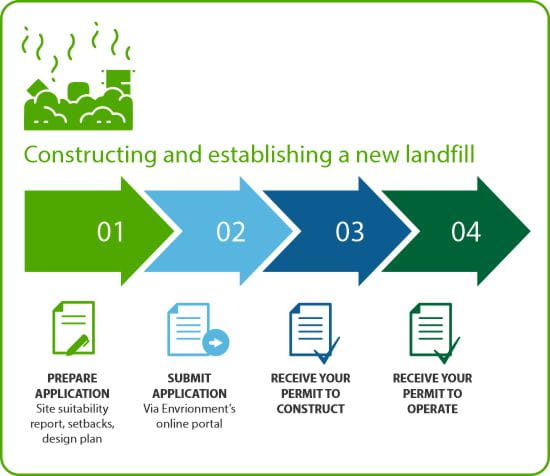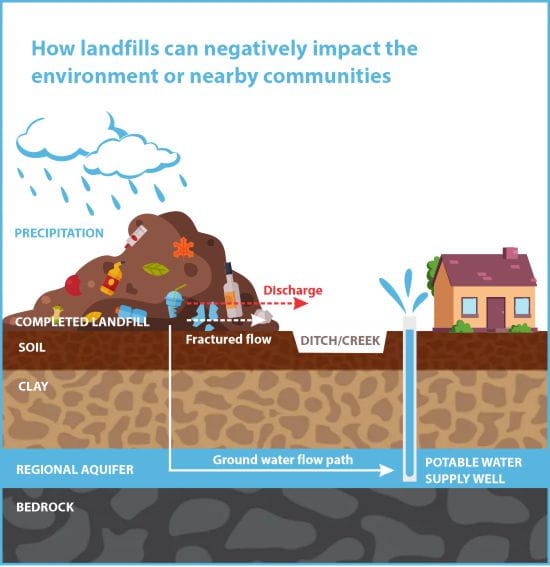When developing a landfill, you must follow best design practices and consider specific site conditions to protect groundwater from potential contamination.
Before beginning construction of a new landfill, you will need to submit an application, along with a design plan, to the Ministry of Environment for approval.

To apply for a landfill permit:
1. Prepare Application
Applicants must work with a qualified person (QP) to prepare an application to construct a landfill. The application needs to include:
- Site suitability report – this report is important to help design the landfill. It details the information about the site, including the type of soil present and information on groundwater and surface water.
- Setbacks – landfills are required to be certain distances from high traffic/inhabited areas such as residences and highways. This information can be found in section 8 of The Municipal Refuse Management Regulations.
- Design plan – the design plan provides the details and drawings for the landfill based on the site-specific requirements. Refer to the Landfill Design Plan Fact Sheet for more information about designing and establishing a new municipal or private landfill.
2. Submit Application
Submit your application
For more information about registering for and using the portal, visit Environment Business Services.
3. Receive Permit
If your application is approved, a permit to construct will be issued with conditions that must be met. These conditions include, but are not limited to:
- A construction verification report that includes quality assurance and quality control test results. This ensures the landfill is constructed according to the design plan.
- The development of an operations plan and emergency response plan prior to operation of the facility.
- A preliminary closure plan (required no later than 60 days after the completion of construction of the landfill.) This provides a roadmap for the operation of the landfill.
A permit to operate will be issued once all documents required in the permit to construct are submitted and approved.
Related Information


